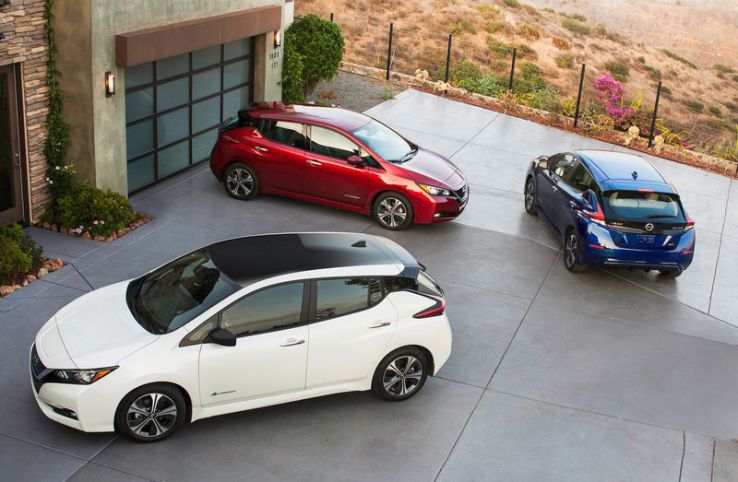Nissan unveiled its new 2018 all-electric Leaf at a special event on Tuesday, and the much-anticipated successor to one of the earliest production EVs had some interesting tricks up its sleeve. Most of these focused on intelligent driver assistance features, including ProPILOT semi-autonomous driving and parking capabilities.
The Leaf also had an updated body design, with a more aerodynamic look aimed at helping to make the most of its onboard electric battery. That battery provides 150 miles of range under EPA estimates (400 km or 238 miles under the less conservative Japanese rating agency standards), which is better than the just-over 100 miles of the last generation, but below some of its key rivals at the entry-level including the Tesla Model 3 and the Chevrolet Bolt for range.
The battery can be charged in 16 hours using 3 kW charger, or 8 hours using a high-output 6 kW hour charger. A quick charge option will allow it to gain back 80 percent of its charge in just 40 minutes, too. Higher range, higher power performance version will be available at additional cost in 2018.
Nissan also tried to downplay the ‘EV’ identity of the car, arguing that it’s actually just a car – they’re trying to draw equivalence between electric vehicles and vehicles that use traditional fuel-injection vehicles, as a way of signaling that this will be a much more broad-reaching focus going forward in terms of market ambitions.
Nissan is also promoting its ProPILOT features here, which offer intelligent, hands-free parking, as well as SAE Level 2 features when driving on single-lane highways, including lane-keeping and maintaining distance between the car and vehicles ahead, with automatic acceleration and braking.
The new Leaf features regenerative braking, which allows for single-pedal driving if you’ve got the foot skills and sense of timing. It has enough friction to hold the vehicle stock still even when on an incline, according to Nissan.
On the inside, there’s a 7-inch full-color TFT touchscreen display, which provides the visuals for the new Safety Shield tech that shows you what’s going on around your car, and it also supports Apple CarPlay for iPhone users.
Further details including U.S. pricing are yet to come, but it is slated to go on sale October 2 in Japan, and deliveries in the U.S., Canada and Europe are likely to begin in January, 2018. Nissan has said that pricing will be comparable to that of the current model, and that it feels “certain” it will be able to at least double or maybe even triple sales at home in Japan.
Content from: techcrunch.com





